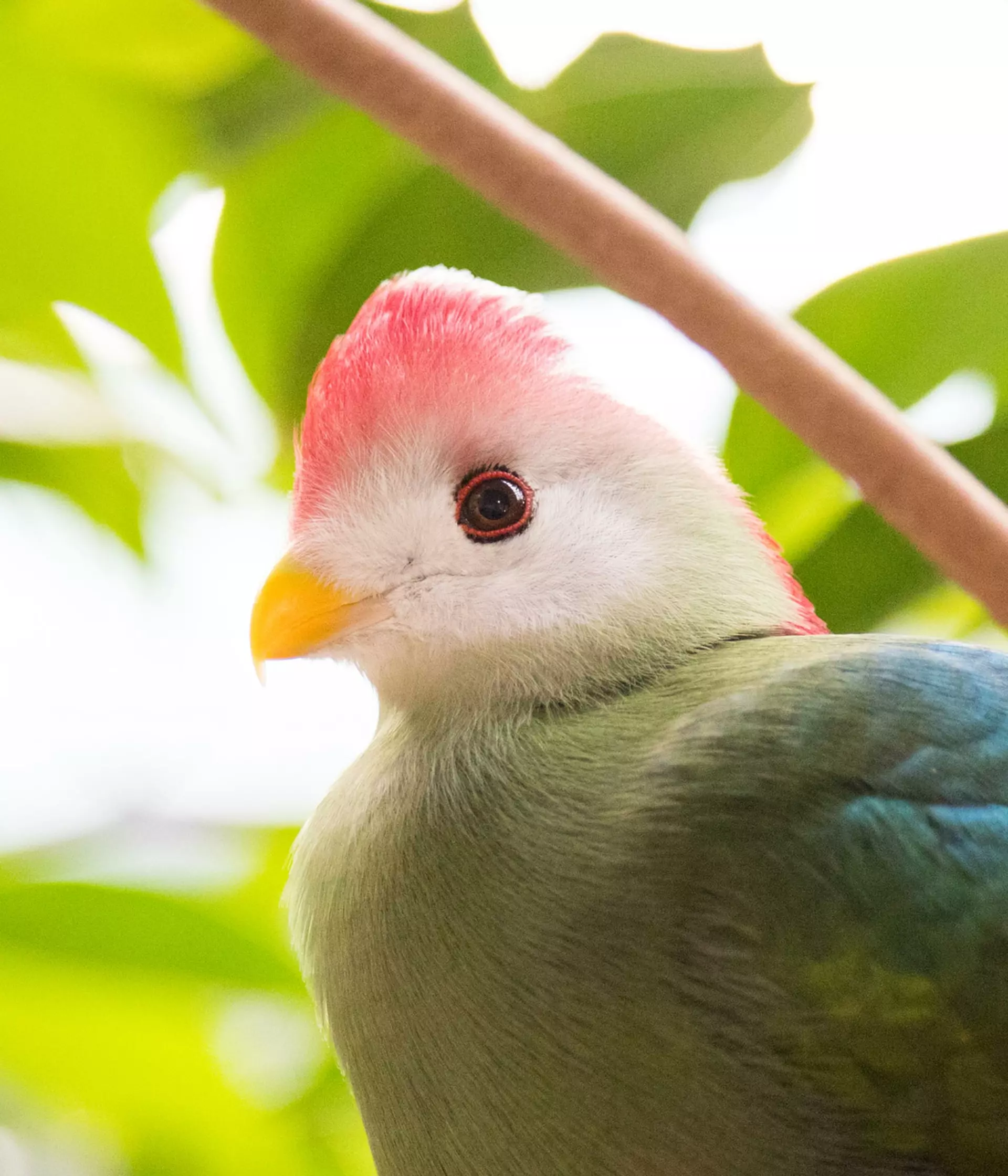
Area of zoo
Orange zone
Enclosure status
Open
Population in the wild
Decreasing
IUCN status
Least Concern
Scientific name
Tauraco erythrolophus
Order
Musophagiformes
Type
Birds
Family
Musophagidae
Region
Angola
Habitat
Tropical forests
What do red-crested turacos look like?
Brightly coloured, the red-crested turaco features a white face, with distinctive red head feathers and a green body, while feathers on its wings are bright red and dark blue.
Red-crested turaco facts
- Its nest is a fragile platform of twigs placed in a tree 3-5 metres above the ground.
- These birds often sit totally still in trees for hours and climb around like parrots. Look carefully among the leaves.

What do red-crested turacos eat?
Fruit, berries, flower buds, young leaf shoots and insects.
Red-crested turacos habitat
Tropical forests.
Where do red-crested turacos live?
Angola.
What threats do red-crested turacos face?
Habitat destruction.
Where can I find red-crested turacos at London Zoo?
You can find the red-crested turacos in the Blackburn Pavilion in the Zoo's Orange zone.
London Zoo Newsletter
Get the latest updates about exciting animal news from the Zoos, upcoming events, experiences, offers
